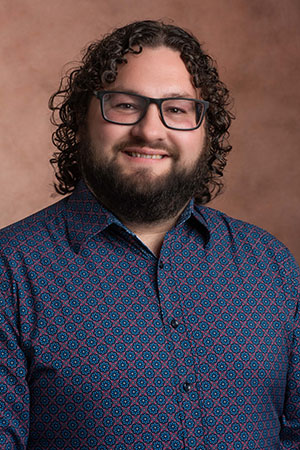
Throughout his life, Christopher Jondle, PhD, has always wanted to help people.
Having developed a deep love of science and medicine at an early age, he thought medical school would be the logical next step. In the midst of pre-med courses at the University of Wisconsin-Green Bay and feeling unsure whether hospital life was really for him, Dr. Jondle’s curiosity and enthusiasm for science caught the attention of a microbiology professor who asked if he had ever considered doing research.
It was a conversation that changed everything.
“Not long after, I got some hands-on time in the lab and kind of began to see this career opportunity open up that I wasn't aware of before,” Dr. Jondle said. “It fit with what I was always wanting to do in terms of making discoveries and finding things that are ultimately going to help broad groups of people.”
Upon earning his undergraduate degree from UW-Green Bay, Dr. Jondle went to the University of North Dakota and obtained a PhD in Microbiology and Immunology in 2017. While at UND, he studied under Jyotika Sharma, PhD and was awarded the American Association of Immunologist (AAI) Careers in Immunology Fellowship in 2016 for his research focusing on bacterial-host interactions.
After completing his PhD, Dr. Jondle went to the Medical College of Wisconsin for a postdoctoral fellowship in the lab of Vera Tarakanova, PhD. There, he switched focus to viral-host interactions, specifically focusing on oncogenic gammaherpesviruses.
As a postdoctoral fellow, Dr. Jondle was awarded a three-year American Cancer Society Fellowship in 2019 for his groundbreaking discovery that the proinflammatory cytokine IL-17A is proviral in the context of gammaherpesvirus infection.
“That was a surprising discovery in the sense that, from what we've seen in the context of other pathogens, bacteria, fungus, IL-17 plays a role in clearing them, but the virus is actually doing something different,” Dr. Jondle said. “We're seeing that the virus is actually utilizing IL-17 -- it needs it -- as a tool to establish its long-term infection.”
That discovery has built the basis of Dr. Jondle’s work here at Western Michigan University Homer Stryker M.D. School of Medicine (WMed), where he joined the Department of Investigative Medicine and the Center for Immunobiology in August 2022.
At WMed, Dr. Jondle’s lab continues to study oncogenic gammaherpesviruses, most notably Epstein-Barr virus (EBV), a human specific gammaherpesvirus that infects more than 95% of all adults, establishing lifelong infection. While most people remain perfectly healthy and are not impacted by the virus, EBV has been tied to multiple cancers, including B cell lymphomas, as well as various autoimmune diseases.
“This research is very relevant as there's potential for this virus to impact you directly, either yourself or someone you love,” Dr. Jondle said. “What we're trying to do every day is understand what the virus is doing and how the human immune system responds to it in order to develop therapeutic and targeted treatments to help mitigate the major impacts that this virus can put on certain people.”
Dr. Jondle’s lab is currently supported by research technician Samantha Bradford and postdoctoral fellow Sheikh Tahir Majeed, PhD. Among the various projects currently ongoing in the lab, Dr. Jondle and his team are exploring whether additional infections -- whether it be bacterial or viral -- cause increased instances of reactivation of EBV, which may help EBV transform and lead to cancer.
“The ultimate goal of all of this work is to try to understand what the virus is doing,” Dr. Jondle said. “We may not be able to completely block infection of Epstein-Barr Virus, but if we can just prevent the negative events from happening and mitigate the risk of lymphomas developing or autoimmune diseases developing, understanding what is going on in these individuals that develop these diseases, what's different, what's happened, and how we can target that -- that's what we're trying to do in the lab every day.”
